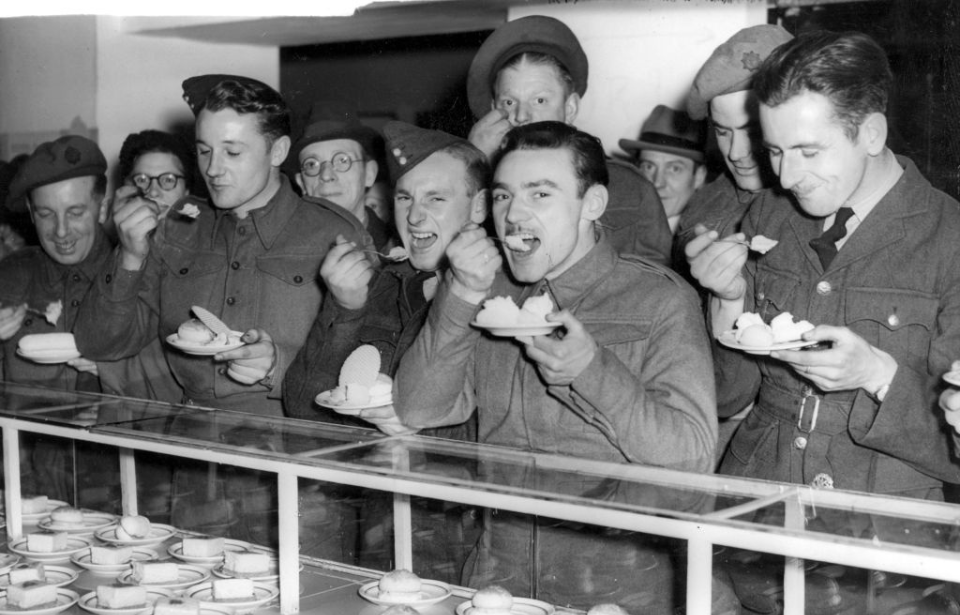Whether it’s a photograph of a loved one, a favorite meal or one of the many simple commodities we take for granted at home, the smallest comforts can – and do – make a big difference in times of war. For those who served during World War II, ice cream took on an important role, making them feel relaxed, and the story behind its impact is a surprising one!
An alcohol ban triggered the US Navy’s frozen treat craze
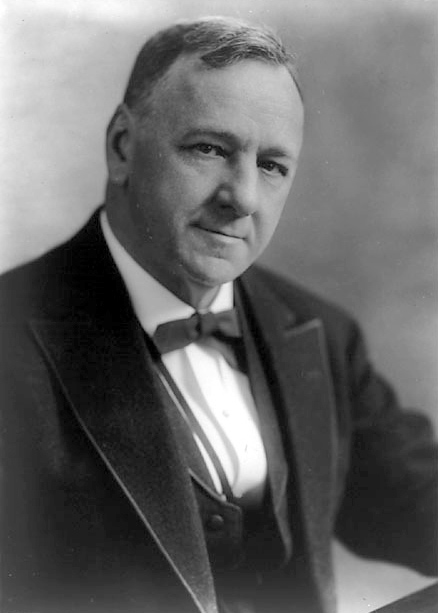
On July 1, 1914, alcohol was banned on US Navy ships. This was years before Prohibition made booze illegal across the entirety of the United States. Word of the ban had been announced a few months prior and, while negatively received, its introduction wasn’t all that surprising, given then-Secretary of the Navy Josephus Daniels’ support for the Temperance Movement.
General Order No. 99, as it was called, stated, “The use or introduction for drinking purposes of alcoholic liquors on board any naval vessel, or within any navy yard or station, is strictly prohibited, and commanding officers will be held directly responsible for the enforcement of this order.”
In response to the order, many within the Navy mocked Daniels, giving him the nickname “USS Grapejuice Pinafore.” His ban on alcohol survived the 1933 ratification of the 21st Amendment, with a change being made to allow for its consumption at particular locations on land.
Boosting morale with ice cream during World War II
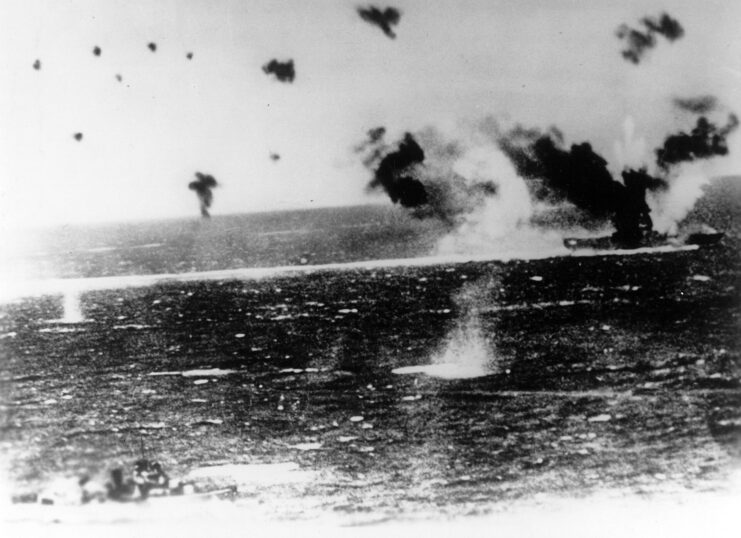
With the United States embroiled in the fighting of World War I, the US Navy recognized that it needed to do something to boost the morale of sailors. The solution? Ice cream! As it turns out, the frozen treat has always been viewed as a comfort food.
Don’t believe us? Consider this wild story from the Battle of the Coral Sea in May 1942, during the Second World War. When the USS Lexington (CV-2) wound up being scuttled after suffering immense damage during the engagement, her crew took the time to grab containers of ice cream, to ensure it didn’t go to waste on the seafloor.
According to The Atlantic, “Survivors describe scooping ice cream into helmets and licking them clean before lowering themselves into the Pacific.”
Making sure everyone could enjoy a sweet treat at sea
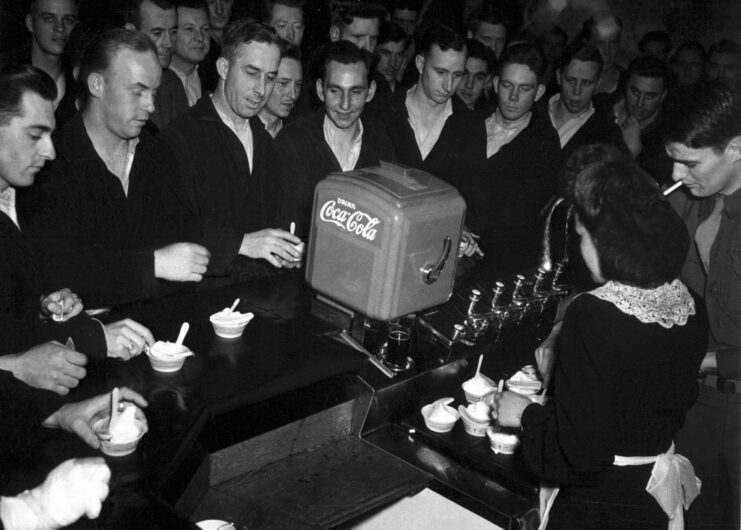
Following then-Under Secretary of the Navy James Forrestal’s assistant writing that “ice cream, in my opinion, has been the most neglected of all the important morale factors,” ice cream bars were installed aboard ships large enough to house them. They had a unique name: “gedunk bars” (we know, not the most appetizing of phrases).
Another way the US Navy answered sailors’ calls for ice cream was to spend a whopping $1 million to convert a US Army Transportation Corp concrete barge into a floating ice cream factory that would be towed throughout the Western Pacific.
The ‘ice cream barge’ could hold 2,000 gallons of the dairy treat
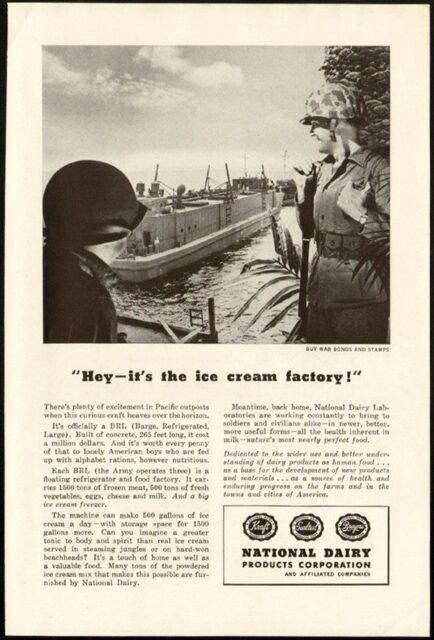
The ice cream barge, as it became known, manufactured and delivered ice cream to smaller vessels that didn’t have the space for their own facilities. In one shift, it could produce 500 gallons of the sweet treat (about 10 gallons per seven minutes) and hold as much as 2,000 gallons!
It did, however, have its setbacks, including needing a fleet of tugboats to tow it, since it didn’t have its own motor. Despite this, the joy and comfort it brought to sailors made it a priceless commodity.
Other US military services craved iced cream
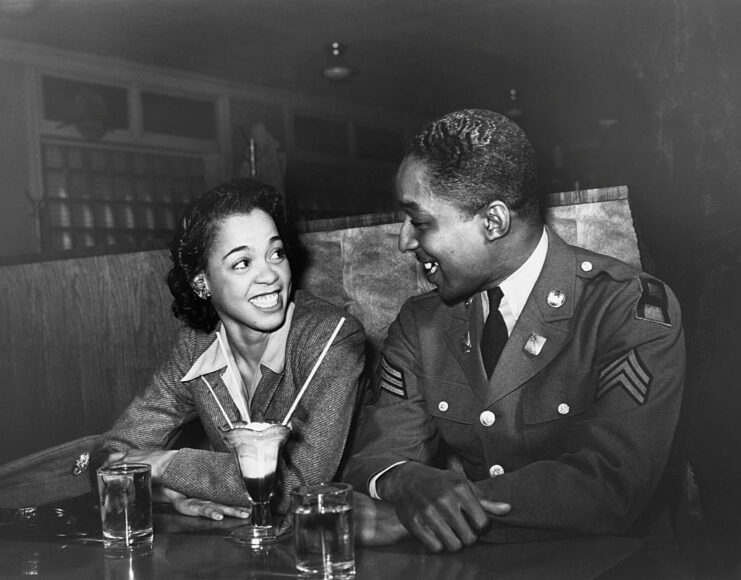
The US Navy wasn’t the only service to use ice cream as a morale booster during World War II. The US Army built three concrete barges of its own, and even developed a dehydrated ice-cream mix that amounted to the production of about 135 million pounds annually.
Pilots and aircrews in the US Army Air Forces (USAAF) got creative when it came to ensuring the sweet treat was available, even in the air. Those aboard Boeing B-17 Flying Fortresses used the open seats on the bombers as makeshift freezers, as they reached temperatures as low as -25° Fahrenheit.
Smithsonian Magazine also reports that aviators in the US Marine Corps, as well as those in the Navy, would make their own ice cream while flying missions. According to J. Hunter Reinburg, canned milk and cocoa powder would be mixed together and placed in fuel drop tanks, where they’d be exposed to below-zero temperatures and be frozen (or, at least, chilled) by the time they returned to base.
More from us: Phantom: The Innovative and Unique Self-Propelled Concrete Tank Vessel
These flights were dubbed “Operation Freeze” – talk about creative!
